Lore in Mass Effect 2 covers the basic aspects of the Universe. These aspects are the technological, cultural and political decisions from alliances to battles and war, made by the different races and organizations, with their respective purposes, reasons and backgrounds, from the past up to the present of the game timeline.
Mass Effect Lore
In 2183, the Citadel Space Station was invaded by a synthetic geth army in an attempy to open a portal for the Reapers, machines that destroy all organic civilizations every 50,000 years. Commander Shepard was leading the defense, but the Citadel Council was lost.
The New Council led by Humans tries to calm the public concern about the rumor of the Reapers' Return. Shepard and the Normandy starship were sent to destroy all remaining geth resistance.
Aliens: Council Races

Asari
The asari were the first species to discover the Citadel. When the Salarians arrived, it was the Asari who proposed the establishment of the Citadel Council to maintain peace throughout the galaxy. Since then, the Asari have served as the mediators and centrists of the Council.
An all-female race, the Asari reproduce through a form of parthenogenesis. Each Asari can attune her nervous system to that of another individual of any gender, and of any species, to reproduce. This capability has led to unseemly and inaccurate rumors about Asari promiscuity.
Asari can live for over 1000 years, passing through three stages of life. In the Maiden stage, they wander restlessly, seeking new knowledge and experience. When the Matron stage begins, they 'meld' with interesting partners to produce their offspring. This ends when they reach the Matriarch stage, where they assume the roles of leaders and councilors.

Salarians
The second species to join the Citadel, the salarians are warm-blooded amphibians with a hyperactive metabolism. Salarians think fast, talk fast, and move fast. To Salarians, other species seem sluggish and dull-witted. Unfortunately, their metabolic speed leaves them with a relatively short lifespan; salarians over the age of 40 are a rarity.
The Salarians were responsible for advancing the development of the primitive Krogan species to use as soldiers during the Rachni Wars. They were also behind the creation of the genophage bioweapon the turians used to quell the Krogan Rebellions several centuries later.
Salarians are known for their observational capability and non-linear thinking. This manifests as an aptitude for research and espionage. They are constantly experimenting and inventing, and it is generally accepted that they always know more than they're letting on.
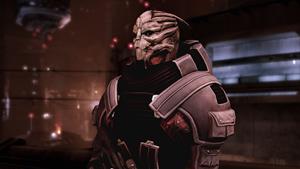
Turians
Roughly 1200 years ago, the Turians were invited to join the Citadel Council to fulfill the role of galactic peacekeepers. The Turians have the largest fleet in Citadel space, and they make up the single largest portion of the Council's military forces.
As their territory and influence has spread, the Turians have come to rely on the Salarians for military intelligence and the Asari for diplomacy. Despite a somewhat colonial attitude towards the rest of the galaxy, the ruling Hierarchy understands they would lose more than they would gain if the other two races were ever removed.
Turians come from an autocratic society that values discipline and possesses a strong sense of personal and collective honor. There is lingering animosity between turians and humans over the First Contact War of 2157, which is known as the 'Relay 314 Incident' to the turians. Officially, however, the two species are allies and they enjoy civil, if cool, diplomatic relations.
Aliens: Extinct Races
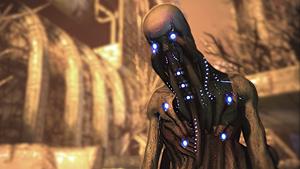
Protheans
Fifty thousand years ago, the Protheans were the only spacefaring species in the galaxy. They vanished in a swift 'galactic extinction'. Only the legacy of their empire remains. They are believed to have built the mass relays and the Citadel, which have allowed numerous species to explore and expand throughout the galaxy.
Prothean ruins are found on worlds across the galaxy. While surprisingly intact for their age, functioning examples of Prothean paleotechnology are rare. Time and generations of looters have picked their dead cities and derelict stations clean.
Some believe the Protheans meddled in the evolution of younger races. The hanar homeworld of Kahje, for example, shows clear evidence of former Prothean occupation. The presence of a former Prothean observation post on Mars has caused a rebirth of 'interventionary evolutionists' among Humans. These individuals believe the god-myths of ancient civilizations are misremembered encounters with aliens.
Aliens: Non-Council Races
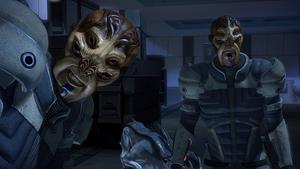
Batarians
In the early 2160s, the Alliance began aggressive colonization of worlds in the Skyllian Verge, much to the dismay of the Batarians who had been developing the region for several decades. In 2171, the batarians petitioned the Council to declare the Verge a "zone of batarian interest". The Council refused, however, declaring unsettled worlds in the region open to human colonization.
In protest, the Batarians closed their Citadel embassy and severed official diplomatic relations with the Council, effectively becoming a rogue state. They instigated a proxy war in the Verge by funneling money and weapons to criminal organizations, urging them to strike at human colonies.
Hostilities peaked with the Skyllian Blitz of 2176, an attack on the human capital of Elysium by batarian-funded pirates and slavers. In 2178, the Alliance retaliated with a crushing assault on the moon of Torfan, long used as a staging base by batarian-backed criminals. In the aftermath, the Batarians retreated into their own systems, and are now rarely seen in Citadel space.
Due to historically hostile relationship with humans, Batarians have preference of raiding on human colonies outside of Council and Alliance Space. This adds to the multitude of dangers human colonist face in colonizing planets around the Skyllian Verge and Omega Space.
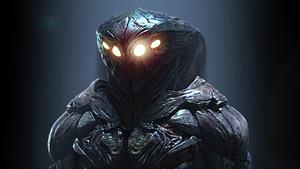
Collectors
Living beyond the Omega-4 mass relay in the Terminus Systems, the mysterious Collector species is glimpsed so rarely as to be taken for a myth by most in galactic society. In reality, Collectors are human-sized insectoid bipeds and can resemble massive winged beetles. They are a terrifying force in the galaxy, responsible for the murder of hundreds of thousands.
Collectors generate permanent stasis fields around themselves, creating nightmarish red-shifted energy fields. In battle, they hold position whenever possible, relying on their aggressive biotics and nearly limitless power. Several types of bipedal Collectors have been identified, including minions, defenders, zealots, assassins, and artillery-operators.
Acting together, Collectors have imprisoned entire cities in stasis. While no definitive forensic accounting exists to explain the fate of those imprisoned, leading speculation is that victims are harvested for scientific experimentation and neuro-biological repurposing.
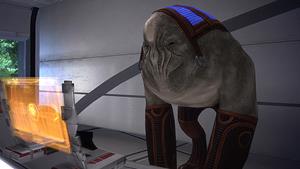
Elcor
The elcor are a Citadel species native to the high-gravity world Dekuuna. They are massive creatures, standing on four muscular legs for increased stability. Elcor move slowly, an evolved response to an environment where a fall can be lethal. This has colored their psychology, making them deliberate and conservative.
Elcor speech is ponderous and monotone. Among themselves, scent, slight movements, and subvocalized infrasound convey shades of meaning that make a human smile seem as subtle as a fireworks display. Since their subtlety can lead to misunderstandings with other species, the elcor often go out of their way to clarify when they are being sarcastic, amused, or angry.
Dekuuna's high gravity impedes mountain formation. Most of the world consists of flat, open plains which prehistoric elcor wandered across in small family bands. Modern elcor still prefer open sky, and become restless and uncomfortable on long starship journeys.
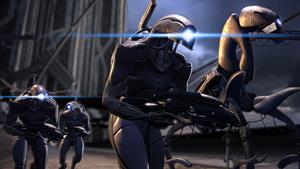
Geth
The Geth are a humanoid race of networked A.I.s. They were created by the quarians 300 years ago as tools of labor and war. When the Geth showed signs of self-evolution, the Quarians attempted to exterminate them. The Geth won the resulting war. This example has led to legal, systematic repression of artificial intelligences in galactic society.
The Geth possess a unique distributed intelligence. An individual has rudimentary animal instincts, but as their numbers and proximity increase, the apparent intelligence of each individual improves. In groups, they can reason, analyze situations, and use tactics as well as any organic race.
Geth space is located at the trailing end of the Perseus Arm, beyond the lawless Terminus Systems. The Perseus Veil, an obscuring "dark nebula" of opaque gas and dust, lies between their space and the Terminus Systems.
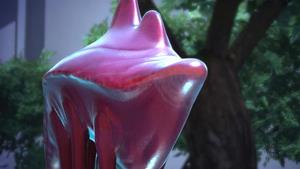
Hanar
The Hanar are a Citadel species known for excessive politeness. They speak with scrupulous precision, and take offense at improper language. Hanar that expect to deal with other species take special courses to help them unlearn their tendency to take offense at improper speech.
All Hanar have two names. The Face Name is known to the world; the Soul Name is kept for use among close friends and relations. Hanar never refer to themselves in the first person in conversation with someone they know on a Face Name basis. To do so is considered egotistical, so instead they refer to themselves as "this one", or the impersonal "it".
Their homeworld, Kahje, has 90% ocean cover and orbits an energetic white star, resulting in a permanent blanket of clouds. Due to the presence of Prothean ruins on the world, many Hanar worship them, and Hanar myths often speak of an elder race that civilized them by teaching them language.
The worship of Protheans is widespread in Hanar culture.
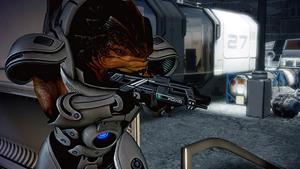
Krogan
The Krogan evolved in a hostile and vicious environment. Until the invention of gunpowder weapons, "eaten by predators" was still the number one cause of Krogan fatalities. Afterwards, it was "death by gunshot".
When the Salarians discovered them, the Krogan were a brutal, primitive species struggling to survive a self-inflicted nuclear winter. The Salarians culturally uplifted them, teaching them to use and build modern technology so they could serve as soldiers in the Rachni War.
Liberated from the harsh conditions of their homeworld, the quick-breeding Krogan experienced an unprecedented population explosion. They began to colonize nearby worlds, even though these worlds were already inhabited. The Krogan Rebellions lasted nearly a century, only ending when the turians unleashed the genophage, a salarian-developed bioweapon that crushed all krogan resistance.
The genophage makes only one in 1,000 pregnancies viable, and today the krogan are a slowly dying breed. Understandably, the krogan harbor a grudge against all other species, especially the Turians. Due to said situation, krogan culture has massively shifted in response to this. Breeding rights with a female is considered one of its highest honors, only granted to Krogans with a large degree of accomplishments. As typical with krogan warlike culture, said accomplished individuals tend to be their greatest warriors and leaders who have achieved large amount of glory in battle.
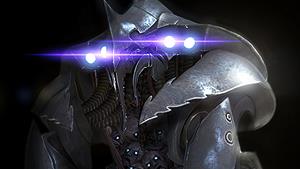
Praetorians
Hovering tanks resembling a cross between an octopus and a giant crab, praetorians are well-armored killing machines of mysterious origin.
Praetorians employ redundant systems from the multiple humans encased within them. Armed with eye-mounted particle beams, they are capable of unleashing devastating close-range energy attacks that also regenerate thier [sic] shields. Within hours after death, the organic components of Praetorian corpses disintegrate into a denatured pus, while their mechanisms turn to ash. One specimen, autopsied within minutes of death, reveals a clue: nanomachines may disintegrate the Praetorian's organic and mechanical components before self-destructing.
If correct, this self-rendering hypothesis could account for three documented cases of dead praetorians apparently releasing (or becoming) clouds of neurotoxic gases, causing suffocating paralysis and nearly-instant death. In one remote facility, 17 soldiers died from gas inhalation while assessing the Praetorian. Any personnel in the vicinity of dead Praetorians are urged to protect themselves with breathing apparatus.
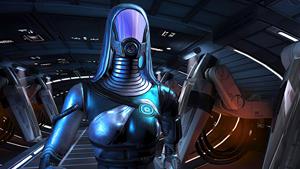
Quarians
Driven from their home system by the geth nearly three centuries ago, most Quarians now live aboard the Migrant Fleet, a flotilla of fifty thousand vessels ranging in size from passenger shuttles to mobile space stations.
Home to 17 million quarians, the flotilla understandably has scarce resources. Because of this, each Quarian must go on a rite of passage known as the Pilgrimage when they come of age. They leave the fleet and only return once they have found something of value they can bring back to their people.
Other species tend to look down on the Quarians for creating the Geth and for the negative impact their fleet has when it enters a system. This has led to many myths and rumors about the Quarians, including the belief that underneath their clothes and breathing masks, they are actually cybernetic creatures: a combination of organic and synthetic parts.
Due to the nature of the quarian's way of life, they have then created the largest know fleet in the Galaxy. That though themselves are considered not as a major power, the strength and size of their fleet would give any would be attacker pause.
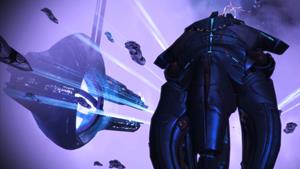
Reapers
A myth common to several cultures in the galaxy, Reapers were imagined to be space monsters who consumed entire stars. Archeologists and mythologists attempting to uncover sources for such myths have yielded little, except interstellar religious themes of all-consuming devils common to primitive cultures.
Reapers: Indoctrination
Reaper "indoctrination" is an insidious means of corrupting organic minds, "reprogramming" the brain through physical and psychological conditioning using electromagnetic fields, infrasonic and ultrasonic noise, and other subliminal methods. The Reaper's resulting control over the limbic system leaves the victim highly susceptible to its suggestions.
Organics undergoing indoctrination may complain of headaches and buzzing or ringing in their ears. As time passes, they have feelings of "being watched" and hallucinations of "ghostly" presences. Ultimately, the Reaper gains the ability to use the victim's body to amplify its signals, manifesting as "alien" voices in the mind.
Indoctrination can create perfect deep cover agents. A Reaper's "suggestions" can manipulate victims into betraying friends, trusting enemies, or viewing the Reaper itself with superstitious awe. Should a Reaper subvert a well-placed political or military leader, the resulting chaos can bring down nations.
Long-term physical effects of the manipulation are unsustainable. Higher mental functioning decays, ultimately leaving the victim a gibbering animal. Rapid indoctrination is possible, but causes this decay in days or weeks. Slow, patient indoctrination allows the thrall to last for months or years.
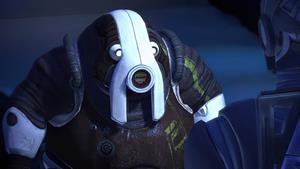
Volus
The Volus are a member species of the Citadel with their own embassy, but they are also a client race of the turians. Centuries ago, they were voluntarily absorbed into the Hierarchy, effectively trading their mercantile prowess for turian military protection.
Irune, their homeworld, lies far beyond the normal life zone of its star. However, the world has a high-pressure greenhouse atmosphere that traps enough heat to support an ammonia-based biochemistry. As a result, the volus must wear pressure suits and breathers when dealing with other species as conventional nitrogen/oxygen air mixtures are poisonous to them, and in the low pressure atmospheres tolerable to most species, their flesh will actually split open.
Volus culture is tribal, bartering lands and even people to gain status. This culture of exchange inclines them to economic pursuits. It was the volus who authored the Unified Banking Act, and they continue to monitor and balance the Citadel economy.
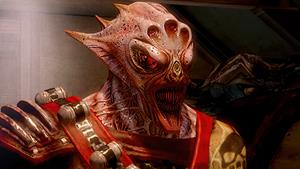
Vorcha
Although they resemble a mammal-reptile cross, the Vorcha have no terrestrial analogue. They are humanoid in form, but Vorcha have "clusters" of non-differentiated neoblast cells, like those of Earth's planarian worms. Damaged Vorcha cells mature into specialized structures to alleviate injury or stress. Transformations include thicker skin following injury, lung adaptation for barely-breathable atmospheres, and stronger cardio-skeletal muscle under high gravity. Skull capacity and brain size do not change, and Vorcha rarely make more than one somatic overhaul.
Vorcha assault each other frequently, causing their young to gain strength, intelligence, and resilience. As a result, Vorcha see inflicting and receiving pain as normal communication. Few Vorcha study professions, in part because their average life expectancy is only 20 years. Because Vorcha can eat and breathe nearly anything, they can live almost anywhere, but racism prevents them from integrating into most societies that dismiss them as vermin. They have few employment options beyond Krogan mercenary bands.
Citadel and Galactic Goverment
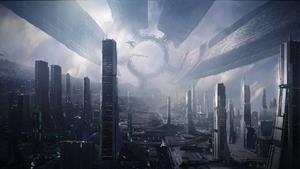
Citadel
The Citadel is an ancient deep-space station, presumably constructed by the Protheans. Since the Prothean extinction, numerous species have come to call the Citadel home. It serves as the political, cultural, and financial capital of the galactic community. To represent their interests, most species maintain embassies on the Presidium, the Citadel's inner ring.
The Citadel Tower, in the center of the Presidium, holds the Citadel Council chambers. Council affairs often have far-reaching effects on the rest of the galactic community. Five arms, known as the wards, extend from the Presidium. Their inner surfaces have been built into cities, populated by millions of inhabitants from across the galaxy.
The Citadel is virtually indestructible. If attacked, the station can close its arms to form a solid, impregnable shell. For as long as the station has existed, an enigmatic race called the keepers has maintained it.

Spectres
Spectres are agents from the Office of Special Tactics and Reconnaissance and answer only to the Citadel Council. They are elite military operatives, granted the authority to deal with threats to peace and stability in whatever way they deem necessary.
They operate independently or in groups of two or three. Some are empathetic peacekeepers, resolving disputes through diplomacy. Others are cold-blooded assassins, ruthlessly dispatching problem individuals. All get the job done, one way or another, often operating outside the bounds of galactic law.
The Spectres were founded after the salarians joined the Council. For many years, they operated in secrecy as back-room "problem solvers." Only after the Krogan Rebellions did their activities become publicized. Assignment of a Spectre is less contentious than a military deployment but makes it clear that the Council is concerned about a situation.
Humanity and the Systems Alliance
Rise of the Alliance
The Rise of the Alliance information varies depending on the morality of Shepard's actions and decisions. The Morality System is measured by Paragon or Renegade score points, representing the "good and evil" respectively.
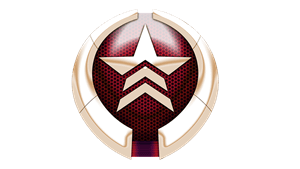
Renegade
A political-economic pact for collective colonial security, the Alliance is the central galactic institution of human society. The Alliance gained associate membership to the Citadel Council in 2165 and assumed leadership in 2183, with former Ambassador Donnel Udina or Captain David Anderson (depending on Shepard's Choice) presiding.
Many species regard humanity as a rogue race and its 2183 victory following the attack on Eden Prime as a brutal and calculated sacrifice of its military rivals. Humans allegedly leveraged military victory into a political one, carving associate membership out of the violently-depopulated Council.
Because of the human Spectre Shepard's pivotal role in saving the Council, many analysts conclude several humans will be made candidates for Spectre status, further solidifying the human contribution to galactic peace.
By achieving in decades what others waited centuries to receive, especially after so bloody a conflict, humans have guaranteed themselves deep hostility and fear throughout the galaxy.
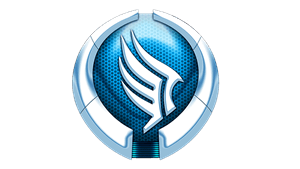
Paragon
A political-economic pact for collective colonial security, the Alliance is the central galactic institution of human society. The Alliance gained associate membership to the Citadel Council in 2165 and full membership in 2183, with Ambassador David Anderson or Donnel Udina (depending on the player's choice) representing humanity.
Human political-economic relationships vary between combative and lucrative. The Turians who'd fought Humans during the 2157 First Contact War have become valuable trade partners, despite residual social hostility.
Other relationships are even more complicated. The rapid rise of Human political influence on the Council -- achieving in decades what other waited or are still waiting centuries to acquire -- has galvanized suspicion and resentment against humanity. That negativity is vastly outweighed by the respect and trust humanity earned by saving the Council during the 2183 attack on the Citadel, at the cost of Alliance cruisers Cairo, Cape Town, Emden, Jakarta, Madrid, Seoul, Shenyang, and Warsaw and their 2400 crew.
Organizations
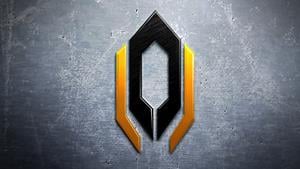
Cerberus
Immediately following the First Contact War, an anonymous extranet manifesto warned that an alien attempt at human genocide was inevitable. The manifesto called for an army -- a Cerberus to guard against invasion through the Charon relay.
Derided as "survivalist rhetoric written by an illusive man," the manifesto and its anonymous author soon fell off the media radar. But in 2165, terrorists stole antimatter from the SSV Geneva; the sole figure arrested named his sponsor "Cerberus." Throughout the 2160s and 2170s, alleged Cerberus agents assassinated politicians, sabotaged starships bearing eezo, and conducted nightmarish experiments on aliens and Humans. Denounced as human-supremacist, Cerberus calls itself human-survivalist.
Counterterror experts speculate Cerberus may have changed leadership with its recent shift to stockpiling ships, agents, and weapons. Whether "he," "she," or "they," the Illusive Man hides his finances behind shell companies. Few doubt he will kill anyone attempting to expose him.
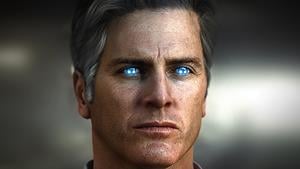
Cerberus: The Illusive Man
The reclusive tycoon calling himself the Illusive Man is a human nationalist focused on advancing Human interests, whatever the cost to non-humans. The Citadel Council regards him as a fanatic posing a serious threat to galactic security.
A mysterious maverick to say the least, the Illusive Man heads the Cerberus Network. Dubbed "the illusive empire" by investigators, Cerberus is an allegedly untraceable syndicate of private intelligence agencies, biotics laboratories, engineering and scientific research teams, and lucrative front companies.
Branded a terrorist and seditionist organization by authorities, Cerberus is the only human power base other than the Terra Firma Party strong enough to embarrass -- if not threaten -- the Council and its Human representatives.
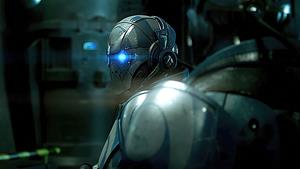
Mercenaries: Blue Suns
Founded by notorious batarian slaver Solem Dal'serah, the Blue Suns began as a Skyllian Verge protection racket providing genuine protection from slavers and pirates. Eventually captured by the Systems Alliance Navy, Dal'serah beat almost two dozen charges to be convicted on a single count of conspiracy. The slaver benefited from the tutelage of cellmate and brilliant con artist Bernard "Legits" Ledger. Upon release five years later, Solem Dal'serah incorporated Blue Suns as a legal security agency.
Today, the Blue Suns boast a galaxy-wide force of Batarians, Turians, Humans, and Krogan. Each deployment is backed by a logistics corps selling everything from heavy weapons to shaving cream. Despite claims that Blue Suns sells its captives as slaves, no Blue Suns employee has ever been convicted on such charges.
Many Blue Suns members sport the company logo in tattoo form, removed during assignments and reapplied at mission-end.
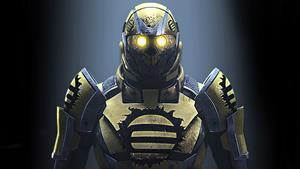
Mercenaries: Eclipse
Brainchild of Asari commando Jona Sederis, Eclipse was incorporated as a "proactive" security company. Influenced by Asari and Salarian military doctrine, Eclipse specializes in sabotage, assassination, and personal and organizational security. Although Citadel governments regard the corporation with suspicion, it's embraced in the Skyllian Verge and Terminus Systems.
Early on, Sederis sought government contracts to establish market share against the better-established Blue Suns. Her agency scored a galactic PR coup by retaking several space stations captured by the Anhur People's Liberation Army and neutralizing its leaders, a victory Eclipse's marketing department never ceases trumpeting.
Based on Omega Station, Eclipse controls nearly 20% of the asteroid's real estate. Its services range from mech repair to open warfare, although assassination is reserved for meeting wider, longer-term company goals (for instance, pre-emptive strikes against pirates rather than murdering spouses for insurance money). Despite numerous reports, Eclipse denies sabotaging or kidnapping business rivals.
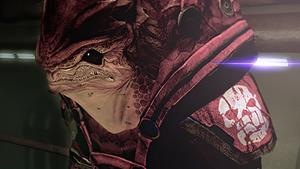
Mercenaries: The Blood Pack
Originally a small Terminus Systems Vorcha gang, the Blood Pack was transformed into a legion by visionary Krogan battlemaster Ganar Wrang. Exiled for striking a female in anger, Wrang obsessed over reclaiming his lost status.
Leading the Vorcha pack as a pirate crew, Wrang cultivated recruits and infamy for a decade before incorporating his fighters as a security company across the Skyllian Verge. His notoriety ensured his initial public offering for investors made him rich beyond most Krogan's dreams. Wrang returned triumphantly to his clan, rallying elders, Krogan hordes, and their firepower and biotic support toward professional violence in the Terminus Systems.
Banned from Citadel space, the Blood Pack bribes its way through spaceports into armed conflicts across the galaxy. Priding themselves for accepting otherwise untouchable contracts, the Blood Pack rejects bodyguarding and security in favor of cases requiring minimal oversight and maximal violence.
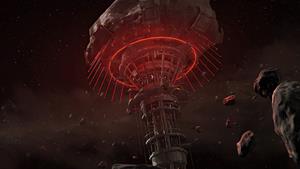
Omega
One of the largest and most influential stations outside of council space. Omega is ruled by Aria T'loak's syndicate and has full control of the station. Major mercenary factions have a large presence within the station but all pay respect to its undisputed leader. Due to the economic value and where it is located, it has give Aria a large degree of influence and wealth. Omega is usually considered as neutral grounds for the various forces, an agreement that most people tend to agree.
